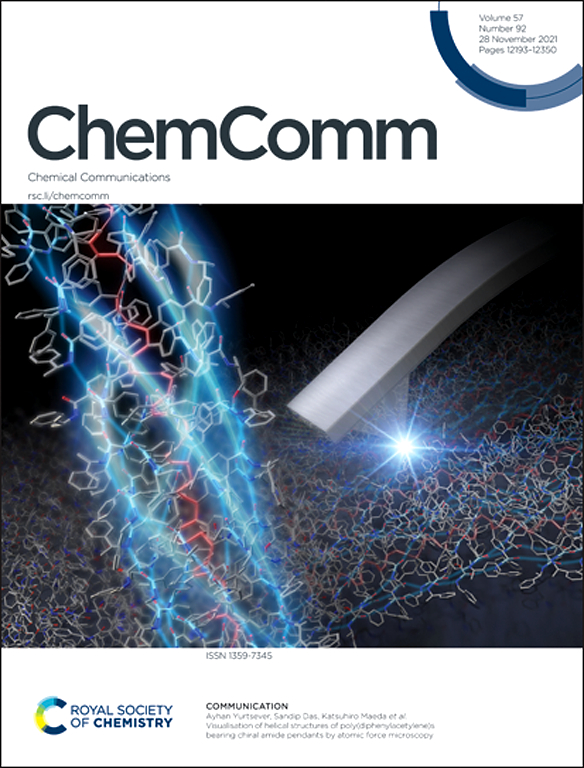Crown ether functionalization boosts CO2 electroreduction to ethylene on copper-based MOFs†
IF 4.2
2区 化学
Q2 CHEMISTRY, MULTIDISCIPLINARY
引用次数: 0
Abstract
The electroconversion of CO2 into ethylene (C2H4) offers a promising solution to environmental and energy challenges. Crown ether (CE) modification significantly enhances the C2H4 selectivity of copper-based MOFs, improving C2H4 faradaic efficiency (FE) in CuBTC, CuBDC, and CuBDC-NH2 by 3.1, 1.7, and 2.4 times, respectively. Among these, CuBTC achieves the highest FE for C2H4, reaching ca. 52% at 120 mA cm−2. Control experiments and in situ Fourier transform infrared spectroscopy (FTIR) reveal that CE stabilizes Cu+ during the catalyst's in situ reconstruction, promoting the formation of Cu2O, which is more favorable for C2H4 production. Furthermore, CE increases the local concentration of K+ at the catalyst–electrolyte interface, enhancing *CO adsorption and facilitating C–C coupling reactions. This process promotes the formation of key intermediates, such as *CO*CO, *CO*COH and *COCHO, ultimately boosting C2H4 production.


冠醚功能化促进铜基mof上CO2电还原成乙烯
二氧化碳电转化为乙烯(C2H4)为解决环境和能源挑战提供了一个有前途的解决方案。冠醚(CE)改性显著提高了铜基mof对C2H4的选择性,使CuBTC、CuBDC和CuBDC- nh2中的C2H4法达化效率(FE)分别提高了3.1倍、1.7倍和2.4倍。其中,cutc对C2H4的FE最高,在120 mA cm−2时达到约52%。控制实验和原位傅里叶变换红外光谱(FTIR)结果表明,CE在催化剂原位重构过程中稳定Cu+,促进Cu2O的生成,更有利于C2H4的生成。此外,CE增加了催化剂-电解质界面处K+的局部浓度,增强了*CO的吸附,促进了C-C偶联反应。这一过程促进了*CO*CO、*CO*COH和*COCHO等关键中间体的形成,最终促进了C2H4的生成。
本文章由计算机程序翻译,如有差异,请以英文原文为准。
求助全文
约1分钟内获得全文
求助全文
来源期刊

Chemical Communications
化学-化学综合
CiteScore
8.60
自引率
4.10%
发文量
2705
审稿时长
1.4 months
期刊介绍:
ChemComm (Chemical Communications) is renowned as the fastest publisher of articles providing information on new avenues of research, drawn from all the world''s major areas of chemical research.
 求助内容:
求助内容: 应助结果提醒方式:
应助结果提醒方式:


